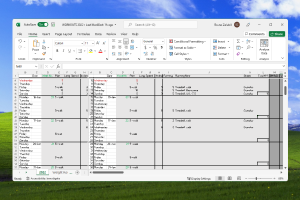Low-code Programming: Power to the People
You don't need years of education to make apps anymore. Low-code programming requires only basic knowledge of C#.
One of the many wonderful things about this technological generation is the fact that the internet is democratic: Everyone with a piece of hardware and access to the internet can learn about faraway places, take online courses, post opinions, and communicate with friends and family.
It is the Gutenberg printing press times a billion, because every click can access pages and pages of text and information.
However, there is still a significant barrier to taking full advantage of the internet. Most people do not have the advanced education and years of experience to create the software through which they can have some semblance of control over their data.
Now, the tide is turning.
No-code and low-code programming has made the development process universal.

You no longer need degrees and experience. A modest amount of training will provide enough knowledge to create the framework for a sophisticated website blog, a customized process workflow for a business, or a database structure to digitally organize reams of paperwork.
This development has come at just the right time. The COVID-19 pandemic revealed gaps in established processes, the “Great Resignation” scrambled IT staffs, and universities around the world churn out new junior programmers every year. Simplified software development enables businesses to use junior developers to support (and even replace) hard-to-get and expensive senior developers. Even “citizen developers” who have no programming experience can help.
In fact, Gartner, the technological research and consulting firm, estimates that in the next two years, citizen developers will outnumber highly trained engineers 4 to 1. Furthermore, Gartner predicts that the number of apps made with no-code/low-code programming should jump to 70% by 2025, up significantly from 25% in 2020.
Traditional Programming Quickly Became Complex
BASIC was how early generations learned programming. Then HTML, which could be self-taught from books, was the way that the next generation made their initial forays into building software.
Since then, advanced languages have added power, but, in the process, this jump in complexity has excluded those who do not have the time to maintain their level of knowledge nor the resources to maintain several types of development software.
This established a classic — or high-code — programming model that puts the expert developer at the controls with a world of possibilities for detailed customization. However, this requires the ability to handle thousands of lines of code for design, development, and deployment. A normal app requires expertise with establishing databases, establishing APIs, designing user interfaces, and implementing security. Fine-tuning and customization takes a lot of time. Testing may produce delays, particularly with customized code.
This resource-heavy programming style has forced the pendulum to swing back toward junior and novice developers. A wave of democratization is breaking over the industry that is filling the gap and making it easier for non-programmers to actually create software in a much more efficient way with the no-code and low-code programming models.
So, what exactly is no-code and low-code programming?
No-code Programming
No-code programming simplifies the development process because it is simply putting building blocks together. The user drags and drops elements. As the name implies, no coding is required.
These platforms are based upon a visual interface that enables the user to establish the steps for the processes that they desire. This is the domain of the “citizen developer”.
The problem is that there are finite numbers of templates and components. If there is not a perfect fit, then there is no recourse for customization.
Low-code Programming
Low-code programming is in the middle: much easier than classic programming and much more powerful than no-code programming.
Like no-code platforms, low-code platforms have templates and components to quickly establish the data foundations and user interfaces that are common in all websites and apps. Deployment to the internet takes one click. A what-you-see-is-what-you-get display provides visuals for the iterations that often provide new ideas for customizations. Novices and junior programmers can jump right in and make something without a lot of training.
The big positive for low-code programming is the ability to customize. That is the final layer where the most valuable elements are defined with C# customization. This enables the programmer to match the software to the exact business logic necessary for the client.

Jetveo, a start-up in Brno, Czech Republic, jumped to take advantage of this trend. It developed its low-code platform while building software for clients, and made it available for developers at the beginning of 2022.
Bespoke Software is Not Out of Reach
You no longer need to be highly educated and have years of experience with programming in order to make useful apps.
No-code and low-code platforms enable users to start from scratch, put some pieces together, then deploy the website with one click of the mouse to see what it looks like. It is 10 times faster and 10 times less expensive than classic programming.
Many companies have used the new programming styles to replace pen-and-paper processes, streamline their internal workflows, and replace out-of-date software with customized versions that perfectly fit their requirements.
More Statistics
From a business point of view, Statista predicts that the global no-code/ low-code market will jump from $13 billion in 2020 to $65 billion in 2027. GlobeNewswire predicts revenue will reach $187 billion by 2030.
Many companies have used the new programming styles to replace pen-and-paper processes, streamline their internal workflows, and replace out-of-date software with customized versions that perfectly fit their requirements.
More Statistics
From a business point of view, Statista predicts that the global no-code/ low-code market will jump from $13 billion in 2020 to $65 billion in 2027. GlobeNewswire predicts revenue will reach $187 billion by 2030.
Forrester says that no-code/ low-code platforms are 10X faster than traditional software development. Redhat estimates that this brings about a 90% reduction in development time.
So, in other words, no-code and low-code programming — and the democratization of software development — is the future.
 EN
EN
